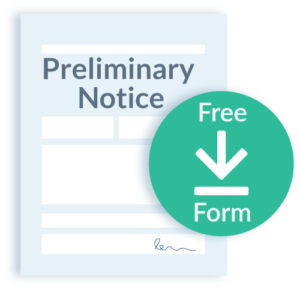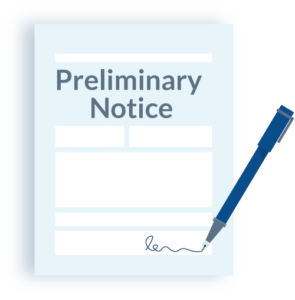About Minnesota Preliminary Notices
Minnesota generally requires all participants on a construction project to provide preliminary notice. General contractors, subcontractors, and suppliers are all required to provide notice to the property owner (or their agent) that they have the right to file a lien if unpaid.
General Contractor requirements
In Minnesota, the GC’s notice is usually included in the construction contract. However, when parties aren’t working from a written contract, or the notice isn’t included, they must send the notice by certified mail or deliver it personally within 10 days after the work is agreed upon.
However, there are many exceptions to the general contractor’s notice requirement. If none of the exceptions apply, however, a general contractor must provide the owner with a general contractor’s notice.
Minnesota law is quite strict about this compared with other states. Preliminary notices are generally visibility documents, designed to give property owners information about the participants on construction jobs that would otherwise be “hidden.” As a result, it is relatively rare that direct contractors (GCs, primes, and others who contract directly with the owner) need to provide preliminary notice.
Potential exceptions can apply to a GC’s Minnesota preliminary notice requirements if:
- The contractor and the owner are substantially the same
- The project is on residential property with more than 4 units
- For non-residential non-agricultural real estate, if the improvement is mote than 5,000 sq. ft.
Download a free Minnesota Notice of Lien Rights Form for prime contractors.
Subcontractor & supplier requirements
Those who did not contract directly with the property owner must send preliminary notice within 45 days of first furnishing labor/materials to the construction project. General contractors may also need to send this notice if they contracted with one, but not all, property owners.
Like the general contractor’s notice, there are some exceptions to whether this notice needs to be sent. It is best practice, however, to send even if an exception applies. There are many reasons to send a preliminary notice even when it’s not specifically required, but the best reason is that by promoting visibility on a project, and making clear from whom lien waivers should be obtained, the payment process can be sped up.
Download a free Minnesota Lien Claimant’s Notice form for subcontractors and suppliers.




